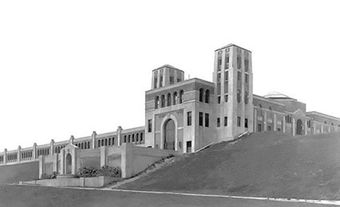This content is from a series created in partnership with Museum Services of the City of Toronto and Heritage Toronto. We gratefully acknowledge funding from the Ontario Ministry of Tourism, Culture and Sport, and the Department of Canadian Heritage.
Toronto Feature: Centre for Addiction and Mental Health
"Burying the Past of 999 Queen"
999 Queen. An address so attached to the bad reputation of the Provincial Lunatic Asylum that when the site was improved in the early 1970s, it received a new street number - 1001 Queen Street West. This was only one of several efforts to bury the past of what was then called the Queen Street Mental Health Centre.
Another was the old asylum's demolition in 1975-76. When architect John Howard designed the institution in the mid-1840s, he envisioned a cutting-edge mental health facility with architecture inspired by the National Gallery in London. Howard incorporated room for exercise and other activities to aid patients. Instead, the facility was overcrowded and understaffed from its opening in January 1850. As pollution blackened the walls and maintenance funds decreased in preparation for a move that never happened, the asylum became, according to historian William Dendy, "a symbol of all the errors and horrors of mental health care."
Further changes in views toward mental health resulted in the revitalization of the Centre for Addiction and Mental Health (CAMH) site, designed to better integrate patients into the community through a mix of care facilities and non-CAMH housing and commercial development.

 Partager sur Facebook
Partager sur Facebook Partager sur X
Partager sur X Partager par Email
Partager par Email Partager sur Google Classroom
Partager sur Google Classroom



